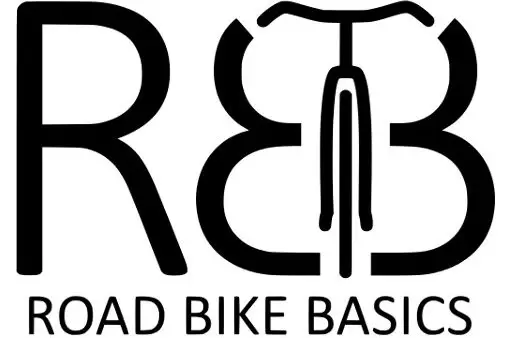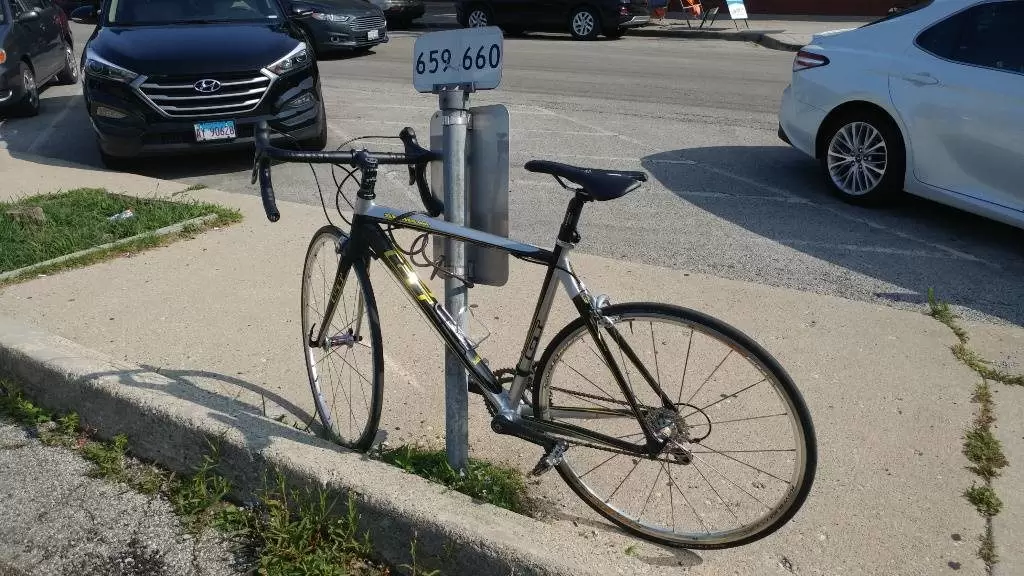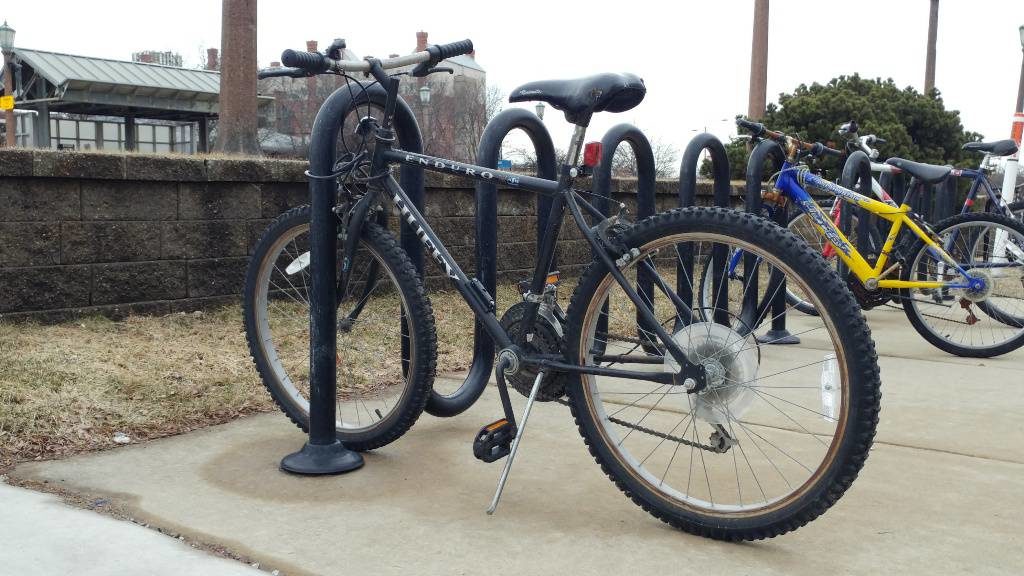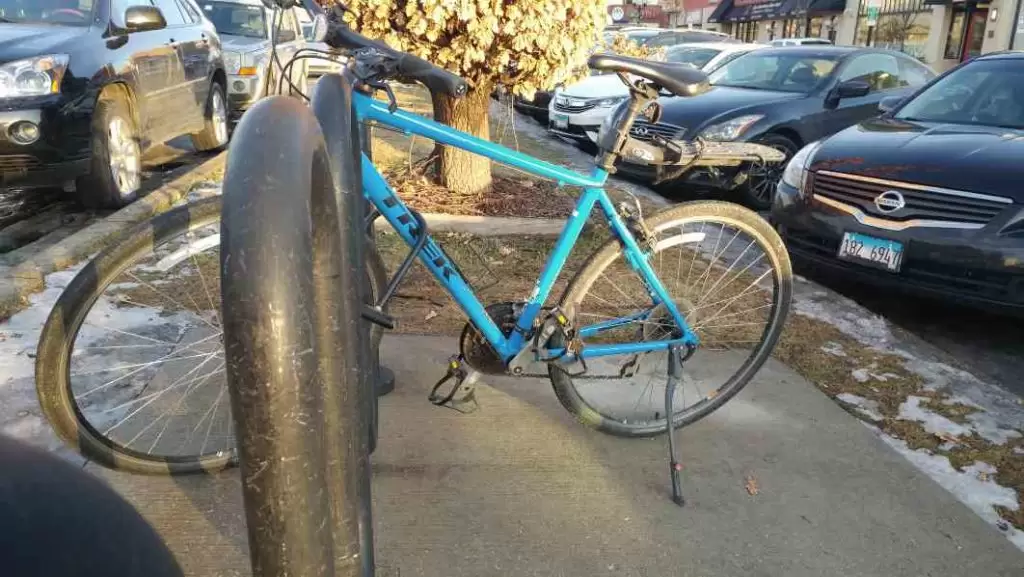After my bike was stolen in college, I became a little more paranoid about where and how I stored my bike. Unfortunately, that meant I rode my bike a lot less often, especially if I wasn’t sure if there would be a rack at my destination. Thanks to some friends and online forums, I’ve realized that I don’t need a rack to keep my bike safe. I don’t even always need a lock! If you have the same fear I did, here are some tips to empower you to confidently park your bike where you were once afraid to.
Lock your bike to something tall and/or incredibly hard to move, like a tree, road sign, light pole, or a fence. If there is absolutely nothing around to lock it to, keep your bike safe by at least immobilizing your wheels. If you don’t have a lock at all, make your bike as difficult to roll away as possible. Most bike thieves look for convenient ones to steal. Also, make sure to grab any accessories that are easy to remove.
I’ll also show you some ways to protect your bike if you don’t have a lock, but that’s at the bottom of this post.
Get a lock
Any sort of heavy-looking lock will almost always deter a bike thief. Even if the lock isn’t really locking anything! The thief is probably looking for something easy to steal and just the thought of having to deal with a lock should be enough to deter plenty of them.
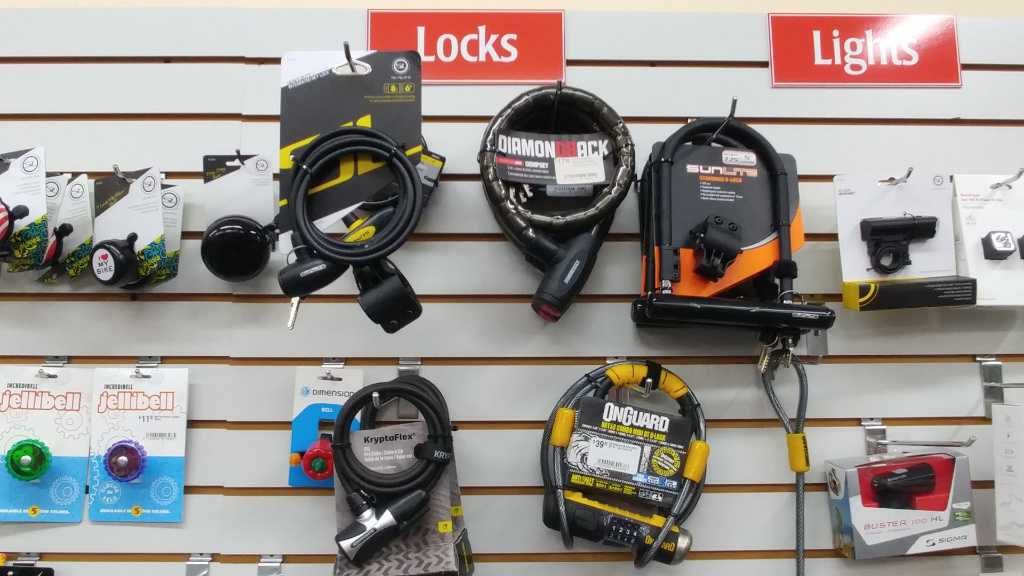
There are two very popular styles of locks: The U-Lock (or D-Lock) and the cable (or chain) lock. There are cheap and expensive versions of each one. But you should definitely consider it an investment. It is keeping you from buying a new bike, after all.
A U-Lock is a metal rod, shaped like a U, that clamps into a horizontal lock with both ends. This kind of lock is compact and quick. It may be more difficult to wrap a U-Lock around certain objects, but you can always use it to immobilize your bike.
If you are locking your bike in an area that is prone to bike theft, don’t get a cheap lock. Get a nicer one that costs $75-$120. Thieves in those sorts of areas will probably have a bolt cutter that will get through a cheap lock much more easily. So, lock your bike to something immobile and buy a lock so difficult to break that it isn’t worth their time.
If you’d like to see a more detailed breakdown of my suggestions for the best bike lock, best U-Lock, best value lock, and best budget lock, here are my recommended bike locks. If you aren’t terribly interested in looking at that, here’s an Amazon link to what I think the best bike lock is.
For the sake of this article, I’m going to call anything flexible with interlocking ends a cable lock. That includes chains, ropes, belts, or anything else that will do the trick when combined with a lock of some sort. Get as creative as you like! Cable locks aren’t very quick, can be compact or bulky, and are the most versatile when locking against a non-bike rack structure.
While you are looking at locks, make sure to consider how you’ll be carrying it while you ride. Some come with options to attach the lock to your bike’s frame. You may not need that if you are going to have a bag or backpack, though. I personally use a small bag or I will coil my cable lock around one of my bottle cages or around my wrist. It may be a bold fashion statement, but it’s very functional.
Things that work like bike racks
Just because there isn’t a bike rack around doesn’t mean that there’s nothing to lock your bike to. There are plenty of things that can perform the same role, though they are a bit less officially.
Here are a few criteria to use when picking what you are going to lock your bike to.
- You can’t just lift the lock over it
- It needs to be hard to move
- There isn’t a lot of foot traffic: Don’t want to be rude
- There isn’t a lot of car traffic: Don’t want it to get hit
That means you should consider:
- Trees
- Road Signs
- Benches
- Poles or Posts
- Railings: Just make sure you can’t slide the lock off the rail, or
- Fences
And you should tend to avoid:
- Shopping cart corrals: Your bike might get hit by a runaway
- Busy sidewalks
- Busy parking lots
- Things that move: Like a gate your thought was just a fence or that truck you thought wouldn’t leave before you got back
- Handicap ramps: That would just be rude.
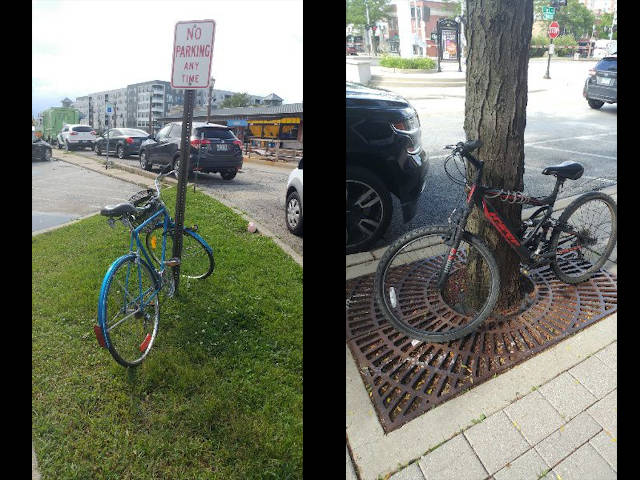
When there’s nothing to lock your bike to
It is important to note that, if you don’t lock your bike to something hard to move, a thief could just pick it up and carry it away. However, most thieves won’t bother if it is going to take much effort or be obvious that they are stealing your bike.
The easiest way to do that is to immobilize your wheels. If they are stuck to your bike and can’t rotate, the bike thief will most likely just leave before anyone notices them. Take your lock and run it through your frame and through both tires if you can. Leaving one wheel unlocked still lets the thief roll your bike away, even if they can’t ride it.
Another consideration to take is if the bike rack exists, and you just don’t know where it is. You can use the street view in an online map to scope out the area before you arrive and check if there are any racks down the road or behind or beside the building. Planning ahead will always be your friend when you don’t know if your destination has a bike rack.
How to keep your bike safe without a lock
If you find yourself at your destination without a lock, you don’t have to ride all the way home to grab it. There are some quick and simple tweaks that you can make to your bike to make it unrideable enough to frustrate a would-be bike thief into leaving your bike where it is. Here are some in order of rising difficulty.
- Leave your bike in the highest gear: It makes it near impossible to get going. So, if you catch them red-handed, they can’t just hop on and ride off before you run up and catch them.
- Hide your bike: That could be behind anything from some bushes, a car, or a house. Just make it hard to find on accident. It may not make it harder to roll away, but you can’t steal what you can’t find.
- Use your helmet strap to block the wheel from turning: It isn’t much, but it will probably catch the thief off guard to the point they’d rather just leave your bike there.
- Take the chain off the rear gears: You’ll get some grease on your fingers, but your bike is very difficult to ride away and the thief will probably abandon it quickly.
- Take your front wheel out of the quick-release: This renders your bike completely unrideable, but the thief will still probably try to ride it. Unfortunately, the bike might get hurt in the process, so be careful to use this tip wisely.
- Take your bike seat with you: I’m not a huge fan of this one since you can still ride the bike without the seat, but it may just be enough to inconvenience a thief into not taking it.
- Take your front wheel in with you: I’ve found that getting the tire around your brakes can be difficult, but I doubt a thief would even walk up to your bike if it didn’t have a front wheel. This is probably the most effective strategy
Don’t forget your accessories
Easily removed accessories, like a computer that twists off, are prime targets for thieves. Right behind those are slightly more difficult lights that are clipped on or saddlebags that are strapped on. As a quick tip, I always run my cable lock through my helmet strap so it is stuck there.
If I’m riding my bike to a destination where I’ll have to leave it out, I try to bring a bag big enough to hold everything. I’ll use my best judgment once I arrive as to how much I actually need to bring with me.
If I’m just walking into the store to grab one thing, I’ll just lock the bike, grab the computer, and head in. If I were taking my bike to school or an appointment, I’d probably grab my lights as well. If I’m going to leave the bike out literally all day, I might grab my saddlebag. Someone is more likely to open a saddle bag than they are to steal the entire thing. So, just don’t keep anything valuable in it while you are away.
Take the bike inside
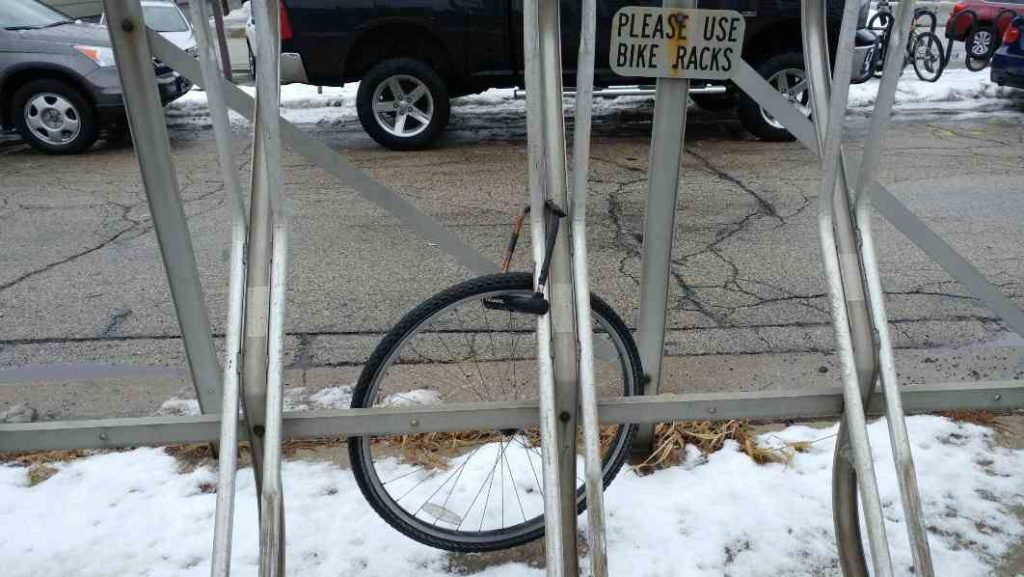
Getting the bike behind a gate or door is a great way to keep it safe. It’s more difficult to steal something you don’t see or can’t get to. Even if you don’t have a garage to put it in, there are some neat indoor wall mounts for bikes on Amazon. They aren’t too expensive, and can even be pretty stylish, too. If you want to store multiple bikes at once, here are some options on Amazon that can hang or hold your bikes inside, outside, or in a garage.
If you are just taking your bike to the store, ask if you are allowed to take it in. Plenty of stores will let you walk around with it as long as you aren’t making a mess. Besides, if you have a basket on your bike, it can actually be incredibly convenient! If they say no, or ask you to go back outside, be respectful and just ask if there is a safe place to keep it while you shop.
If you are riding to work, a lot of employers have some sort of storage solution for bikes. This is especially true if you work in a larger city where bike commuting is common. Otherwise, ask if there is somewhere to keep your bike inside or if they would be willing to install a new one. It never hurts to ask.
Now that I’ve covered some ways to keep your bike safe, I hope that you can confidently get out and ride more often without fearing that your bike will be stolen.
Thanks for being here!
I make content that empowers people to enjoy riding their bikes.
Are you interested in learning more about that?
Here are some hand
